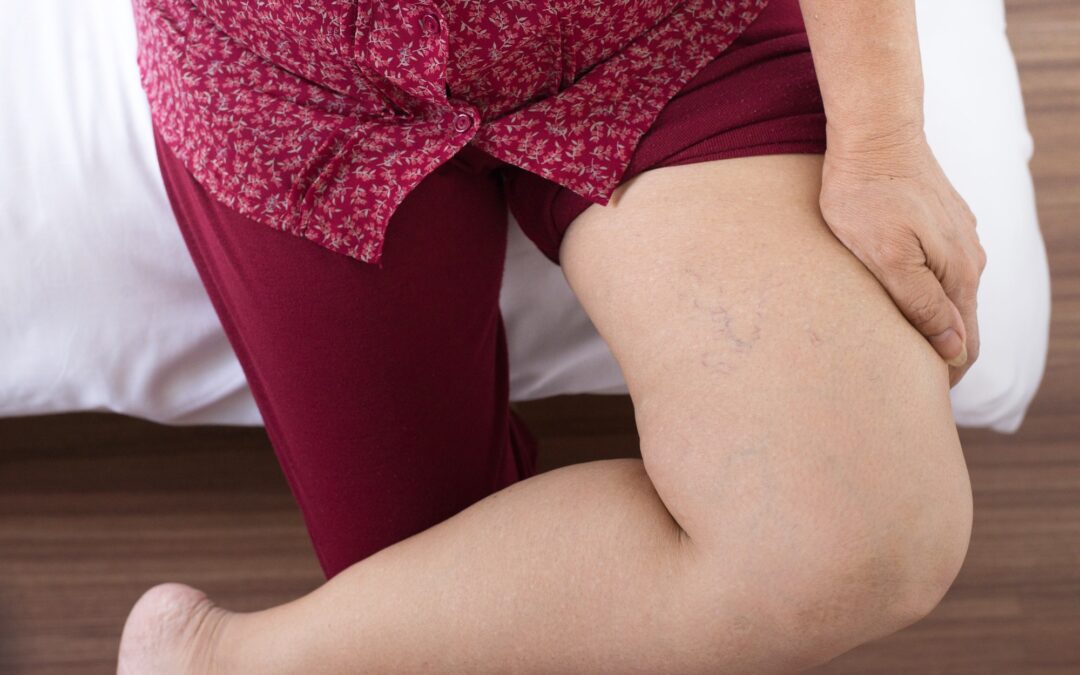Veins play an important role in your everyday health. Learn about veins in legs and how to keep them healthy.
For your health to function properly, it needs to circulate blood throughout your body – and it needs healthy veins to do so. However, several factors affect the health of your veins such as medical conditions and genetics.
The body contains around 60,000 miles of veins, arteries, and tiny capillaries – all of which work to transport blood and nutrients. If there are any blockages that make it harder for blood and nutrients to travel effectively, it will take a toll on your health.
The following explores two common vein conditions and the different things you can do to keep your veins healthy.
Varicose Veins
Blood should efficiently travel throughout your veins without any problems, but sometimes the blood vessel valves don’t close properly. As a result, blood can collect and eventually lead to varicose veins.
Varicose veins are fairly easy to spot: they are enlarged, twisty-looking, have a blue-purplish color, and can bulge out. Those with varicose veins will generally complain about having sore, heavy, achy feelings in the legs.
On the bright side, varicose veins are usually not a serious problem. However, some people with varicose veins can develop phlebitis, where a clot or inflammation can develop.
If you have any areas in your leg that are red, feel warm to the touch, hard, and painful then you may have a blood clot and must see a doctor.
Risk factors for varicose veins include leg injuries, multiple pregnancies, genetics, and medical conditions like deep vein thrombosis. If you lead a sedentary life or spend hours sitting and standing for long periods, you can also increase the risk of varicose veins.
Treatment options will vary and can be anything from simple injections (sclerotherapy) to removal of the damaged veins.
Spider Veins
A similar condition is spider veins, where tiny bluish veins appear on areas in the leg. Fortunately, spider veins don’t collect much blood and don’t cause pain.
In some cases, you may experience leg pain, but the source of the pain is something else. Consider getting an ultrasound, as the pain may be coming from a deeper vein that’s not visible.
Since spider veins are cosmetic issues, treatment options are less invasive and tend to be simple sclerotherapy procedures. In addition to sclerotherapy, you can treat spider veins with lasers, but some doctors recommend against it due to their inaccuracy.
 Maintaining Healthy Veins
Maintaining Healthy Veins
It’s essential that you maintain healthy veins, as they affect your entire health. There are several things you can try that will boost your vein health.
For example, you should strive to be active even at your job. While you may not be able to exercise as part of your job, you should still get up and move around regularly.
You should also drink lots of water, as it helps make the blood thinner and flow more easily. Avoid smoking and nicotine products, as these can thicken the blood and lead to vascular hardening.
Regularly eat fruits and vegetables that are great for circulation such as beets. Moreover, you can take circulation supplements to help promote your overall blood flow.
Supplements like Circulation Boost work by increasing nitric oxide production in the body. In turn, nitric oxide dilates and relaxes blood vessels, resulting in better circulation and energy levels.
A lot of these supplements are available in different flavors to make it easy to drink daily. You can try supplements like Circulation Boost to promote your vein health in addition to exercising and eating healthy.
Whatever you do, make sure you stay on top of your vein and circulation health before you encounter any troubles.

